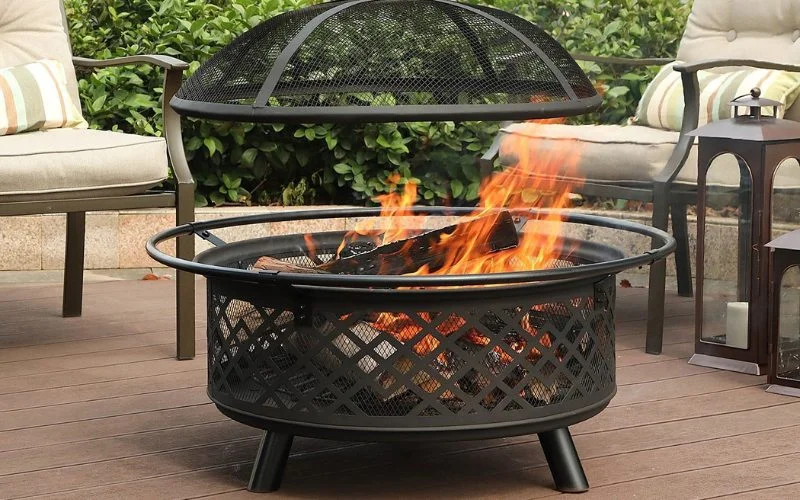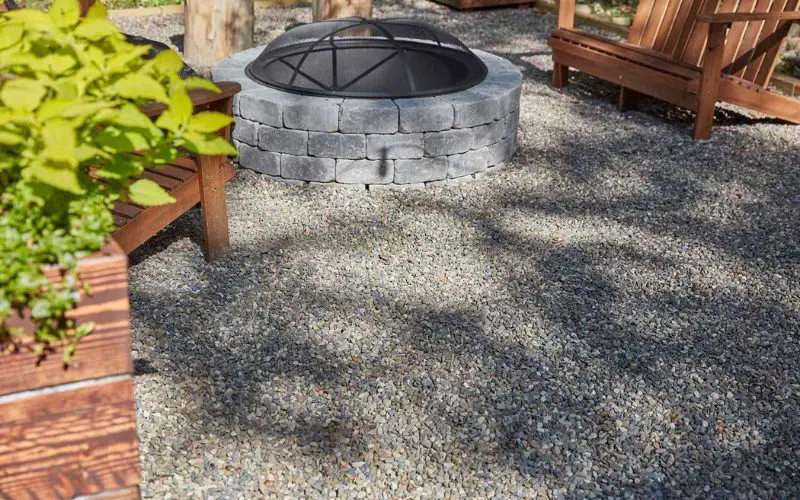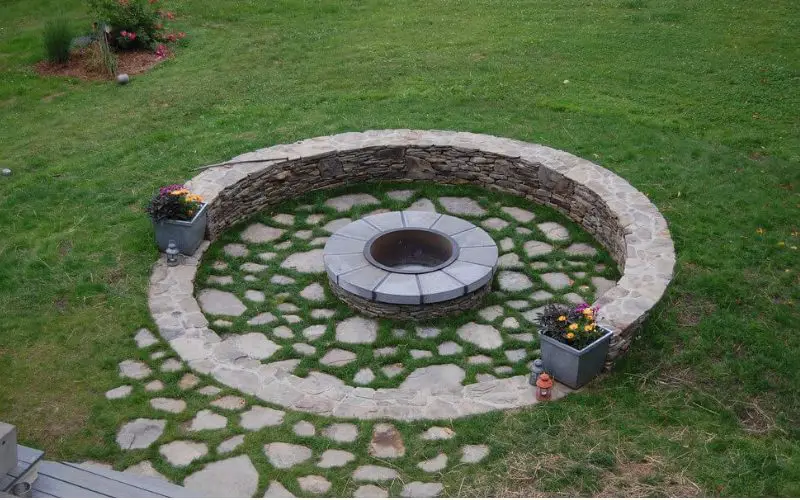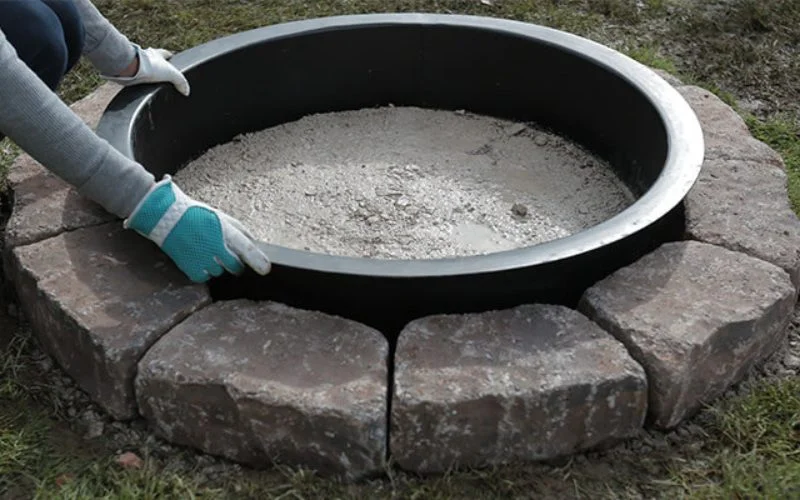One way of recreating the joys of campfire and the great outdoors is by getting or building a fire pit where you and your loved ones can enjoy an evening of bliss with the fire cracking. With the different array of fire pits, you might go for a metal portable fire pit which is an excellent choice.
With a metal fire pit, you will have to put some sand at the bottom to protect the unit from direct contact with the fire since the sand acts as an insulator against high levels of heat because it absorbs the heat and then evenly disperse it throughout the base of the fire pit.
You may also want to check out If You Need Vent Holes in My Fire Pit?
Are Metal Fire Pits Any Good?
Fire pits can be a great addition to your home, giving your outdoor space a lot of ambiances and making it a hot spot for everyone to congregate.
Different materials, such as concrete, stone, or metal, make a fire pit. These materials have their merits and demerits, and so does metal.
Metal fire pits are durable and long-lasting units with many advantages and varieties. For instance, some metal fire pit, like cast iron, is resistant to heat damage, so they don’t warp or get damaged even under intense heat.
Another reason many people love metal fire pits is because they are easy to clean and maintain. The degree of ease of maintenance of a metal fire pit depends on its specific metal. For instance, metals like powder-coated steel, which doesn’t rust or corrode, are easier to maintain.
Another merit of a metal fire pit is that they evenly distribute heat around their surroundings because metals are good conductors of heat, making it easy for them to give off heat uniformly.
The Best Metals For Outdoor Fire Pit

There are three primary metals for making fire pits, and they are :
- Aluminium
- Stainless Steel
- Cast Iron
Aluminium
Many people love aluminum fire pits because they are lightweight and do not corrode or rust easily. Aluminium is a good conductor of heat means your fire will evenly distribute throughout the pit. Aluminum fire pits come in different styles and sizes to suit any taste or preference.
Stainless Steel
Stainless steel has a sleek and modern look making for a very alluring fire pit that is highly resistant to rust and corrosion. Stainless steel is highly heat-resistant, which means it can withstand the high temperatures of a raging fire without damage.
Cast Iron
It is the heaviest of the three metals. It is a durable heat-resistant metal, even more than the previous ones. Cast iron fire pits have very thick walls, allowing them to withstand extreme heat and temperature over a long time without damage.
The weight of the cast iron fire pit serves as an anchor that keeps the portable cast iron from wavering. The disadvantage of the heavyweight is that it makes moving the fire pit a little more complicated.
Taking care of cast iron fire pits is essential because most do fade from weathering, but heat-resistant paint plays a good part in cast iron maintenance and care because it goes a long way in restoring color.
Should I Put Sand In My Metal Fire Pit

Yes, you can put sand at the bottom of your metal fire pit because a layer of sand will protect the metal at the bottom of the fire pit from the extreme heat of the fire.
The sand at the bottom absorbs the heat of the fire and then distributes it evenly throughout the entire base of the pit. Sand is an insulator against high levels of heat and acts to disperse the heat throughout.
For a metal fire pit, if sand is not put at the base, the heat will become concentrated in one specific spot, and when this happens, it will cause the bottom of the fire pit to deteriorate very fast due to excess heat.
You can put different kinds of sand at the bottom of your fire pit, be it play sand, building sand, or silica sand. Using silica sand is highly advisable by a lot of people because of its actual size. By and large, any size will still protect your fire pit.
With all we have said, it is still essential that for every fire pit you buy, you read the manufacturer’s instructions to be sure your fire pit is the type that needs sand at the bottom because some manufacturers don’t require the use of sand in their fire pit.
When Not to Use Sand In A Fire Pit
While we must use sand in fire pits, not all fire pits have this as a requirement. If you are using a firepit with holes at the bottom, placing sand or any other protective alternative at the base of the firepit is unnecessary.
The holes at the bottom of the firepit need to remain open and accessible at all times to allow for proper ventilation because covering the holes will lead to a dangerous buildup of toxic gases and fumes.
Drawback Of Using Sand In A Fire Pit
Here are some demerits of using sand at the bottom of a fire pit.
It collects Moisture
Moisture easily adheres to sand because sand is a water collector, so the sand we put at the bottom of the fire pit usually collects water, making the fire pit damp after some time.
People, however, minimize the amount of water that collects in their fire pits by covering and storing it when it is not used. A demerit of a damp metal fire pit is that it makes the unit prone to rust, no matter how rust-resistant the making material is.
The best thing to do with damp and moist sand in your fire pit is to remove and replace them with dry ones. You should also ensure that you also keep the pit’s surface as dry as possible.
Sand Is Heavy
Sand in large quantities is very weighty and difficult to move. It becomes even more significant if the sand is damp or weighed with water. A portable fire pit that has a large amount of damp sand in it is a hassle to carry around (in fact, we can’t call it a “portable” fire pit anymore)
Cleaning Up Is An Issue
It could be annoying cleaning up the sand in your fire pit when it is damp, and you want to replace it. The sand gets mixed up with the ash, making cleaning the fire pit a little stressful.
Other Alternatives to Sand in a Firepit

Some people are put by having sand in their sand pit. They prefer other options probably due to aesthetic appeal or any other factor. Below are common alternatives to using sand in a fire pit.
Lava Rock
Many people prefer lava rock at the bottom of their fire pit because it offers the same protection for the fire pit base as the sand does. Still, it has the advantage of being durable, leaving more space for better airflow and visual appeal.
The only problem with using lava rock at the bottom of your fire pit is that it can crack and explode. That happens because they are porous rocks, so if they get wet, the water gets sucked into the middle of the rock, and once the rock gets overheated, the water boils and causes the rocks to crack and even explode.
Fire Glass
Fire glass is another popular choice at the bottom of a fire pot. This material can resist high temperatures, last a long time, and distribute heat well.
Fire glass is a material of choice because it comes in various colors, from sky blue to sparkling black, and you can get it in different shapes, like shards or smooth pebbles.
Dirt
Dirt works just as well as sand in protecting metal fire pits, and the beauty of it is that it’s free and readily available. It is usually the last resort for many people because dirt is somewhat ugly.
Gravel
Many people use gravel at the bottom of their fire pits because it’s cheap and works well. It’s a common choice. Gravel cannot handle high temperatures like fire glass or lava rocks because they can crack or explode.
Conclusion
Sand is an excellent way of capturing the heat from a fire pit and radiating it around evenly. The fact that sand is cheap, readily available, and doesn’t explode makes it a great option.
Helpful Links:
- How Do You Measure A Fire Pit Insert
- What Kind of Paint Do You Use on a Fire Pit?
- Can You Put A Fire Pit On Trex Composite Decking?
- Can I Make My Own Fire Pit Insert (If Yes, How Simple)
- How Do You Keep Your Fire Pit from Rusting?
Sand is mainly used on metal fire pots as a protective layer against direct heat from the fire damaging the bottom of the fire pit. Other alternatives to sand include gravel, dirt, fire glass, and lava rocks, and they all have pros and cons.
Thanks for taking the time to read our article, and we hope you find it helpful. Would you mind leaving a comment below if you have any suggestions?
Kindly reach out to people by sharing this post on social media.
If you liked this article, then please follow us on Facebook, Instagram, and Pinterest.

